Breaking Down the Myths and Misconceptions About the Gulf Oil Spill
Does oil stick around in the ecosystem indefinitely? What was the deal with the deformed fish? Can anything bad that happens in the Gulf be blamed on oil?
:focal(301x296:302x297)/https://tf-cmsv2-smithsonianmag-media.s3.amazonaws.com/filer/ad/11/ad11e060-c5e4-4a32-ab90-b97676f1ea7a/oilsargassum.jpg)
In the months and years following the 2010 Deepwater Horizon oil spill, telling fact from fiction regarding seafood safety and ecosystem health was supremely difficult. Is Gulf seafood safe to eat or not? Are there really deformed shrimp and black lesion-covered red snapper? Will the Gulf ever be clean again?
A large part of the confusion was due to the connected, yet distinct, seafood issues surrounding the spill. Whether the seafood was safe for humans to eat was mixed with stories of the future of Gulf fisheries; harm done to wild fish was conflated with health of the seafood supply.
To clear up some of the confusion, here are seven topics of concern, some still unresolved, about the Gulf Oil Spill, brought to you by the Smithsonian Ocean Portal and the Gulf of Mexico Research Initiative (GoMRI). These should help you better understand the spill’s effects on seafood and wildlife.
#1: Once oil enters the Gulf, it will stay there indefinitely.
The fate of oil is difficult to assess because it isn’t any single chemical; it’s instead a complex mixture of different-but-related chemicals that started out as dead plants and animals. Buried deep in the earth and placed under heat and pressure for millions of years, their bodies break down and the hydrogen and carbon rearrange into the components of oil. First they bond together to form long chains. Over time, some of those chains loop into strings of two to seven rings.
Crude oil contains the whole spectrum of these chemicals, from large to small; they degrade at different rates, and some can damage wildlife while others are harmless. The main question then is how long the dangerous chemicals in oil will persist in the Gulf.
When the spill began, many people immediately assumed that oil entering the ecosystem would never break down. That’s because we are so familiar with environmental contaminants that stick around for a very long time, such as DDT, CFCs, or mercury. These take a long time to degrade naturally (or don't at all in the case of mercury), and hence persevere in the environment for a very long time.
In contrast, oil “can be readily degraded,” said Ed Overton, who studies the fate of oil after spills at the Louisiana State University in Baton Rouge and is a lead researcher with GoMRI. “We’re talking about a completely different type of chemical.”
Oil that dissolves into or mixes with water can be broken down by bacteria—and, fortunately, the Gulf of Mexico is loaded with oil-eating bacteria. Between 560,000 and 1,400,000 barrels of oil leak into the Gulf every year from natural oil seeps, and where there's a source of energy, you can generally find bacteria. In the case of the Deepwater Horizon blowout, the spill originated in the deep sea where the oil-degrading bacteria are also found, which helped them to start breaking down the oil quickly.
But for those bacteria to do their job, they need oxygen, and lots of it. As such, the most dangerous place for oil to end up is in marshes. There, oil can easily get buried in the low-oxygen soil and bind with the sediment, where it cannot be broken down and remains until it is flooded out by a storm. And if it sticks around there, being slowly released by flooding events over the course of decades, it can do harm to the 98 percent of commercially-important Gulf species that are dependent on saltwater marshlands during their lifecycle.
It's also possible that some oil sank as it was colonized by bacteria, sticking to and clumping with other floating particles on its way to the deep sea. In some cases, it was buried under the seafloor, where bacteria couldn’t access it as well. So if there is oil that stuck around in the Gulf, marshes and buried seafloor sediments are the places you'd find it.
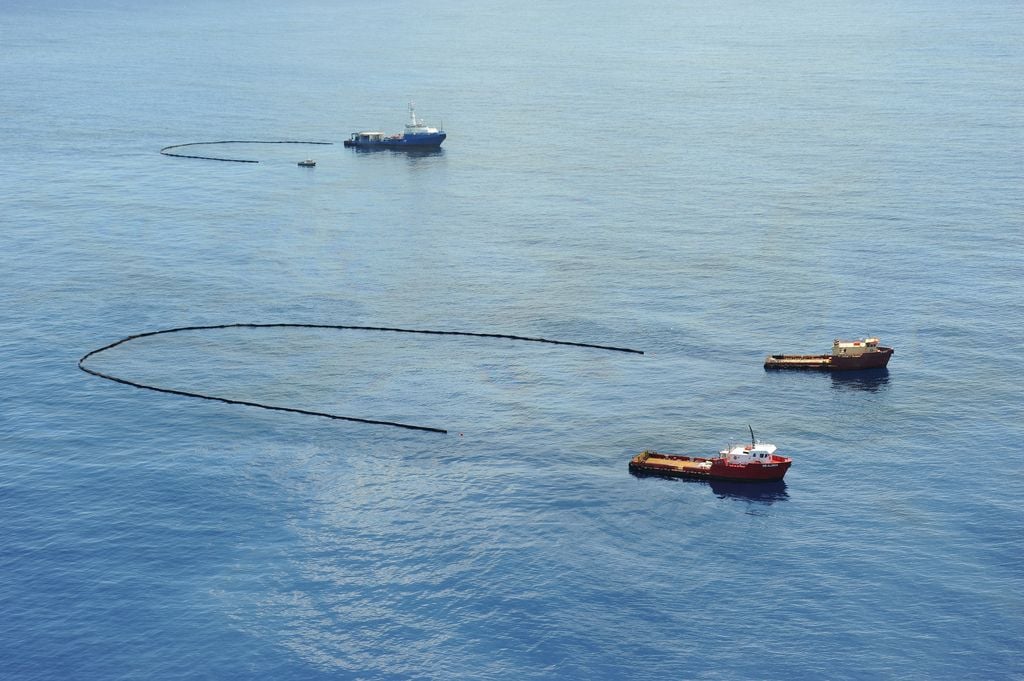
#2: If a fish or other animal eats oil, it will remain in its body forever and get passed up the food chain.
Some of the oil got in the way of marine life before bacteria had time to break it down. Animals and plants that were physically coated with oil often died. But many animals that ingested smaller amounts of oil in the water have ways to get rid of the dangerous oil molecules, which are known as polycyclic aromatic hydrocarbons or PAHs.
When we eat or inhale PAHs, our bodies recognize them as impurities and send them to the liver—our clearinghouse for contaminants—to be broken down. During that process, enzymes break up oil chemicals into mostly less dangerous forms that typically are dissolved in urine and disposed of through normal body processes. However, some of the compounds that result from this breakdown can pose cancer risk. (More on this in the next section.)
Similar to exposed people, exposed fish will clear PAHs out of their muscles and organs within a few days to weeks. After that short window, the PAHs are not passed up the food chain because they aren’t being stored in the fish’s tissues. If that fish is then caught and sold at market, there should be no additional risk to people.
Oysters, mussels and other bivalves don’t have this enzyme system, so they hold onto oil contaminants for longer and in the short term can pass them onto people and other predators. But over time they release these contaminants across their gills back into the environment. Because of these factors (along with the need to be absolutely certain that the fish were safe), NOAA and the FDA closed Gulf fisheries during and after the spill to do extensive testing of seafood to make sure it was safe for human consumption.
In the months after the spill, federal and state agencies tested seafood for carcinogenic PAHs, heavy metals, and dispersants, going through some 10,000 samples. They rarely found any levels of concern; where they did detect measurable PAHs, it was hundreds or thousands of times below the limits that would raise health worries. The fisheries remained closed for a period of time after the initial spill as a precautionary measure and were slowly reopened after testing.
“Given the low levels of PAHs we found, when we found them at all, someone could eat 63 lbs of peeled shrimp (that’s 1,575 jumbo shrimp); or 5 lbs. of oyster meat (that’s 130 individual oysters); or 9 lbs. of fish (that’s 18 8-ounce fish filets) every day for five years and still not reach the levels of concern,” wrote Michael Taylor, FDA deputy commissioner for foods, in a blog post.
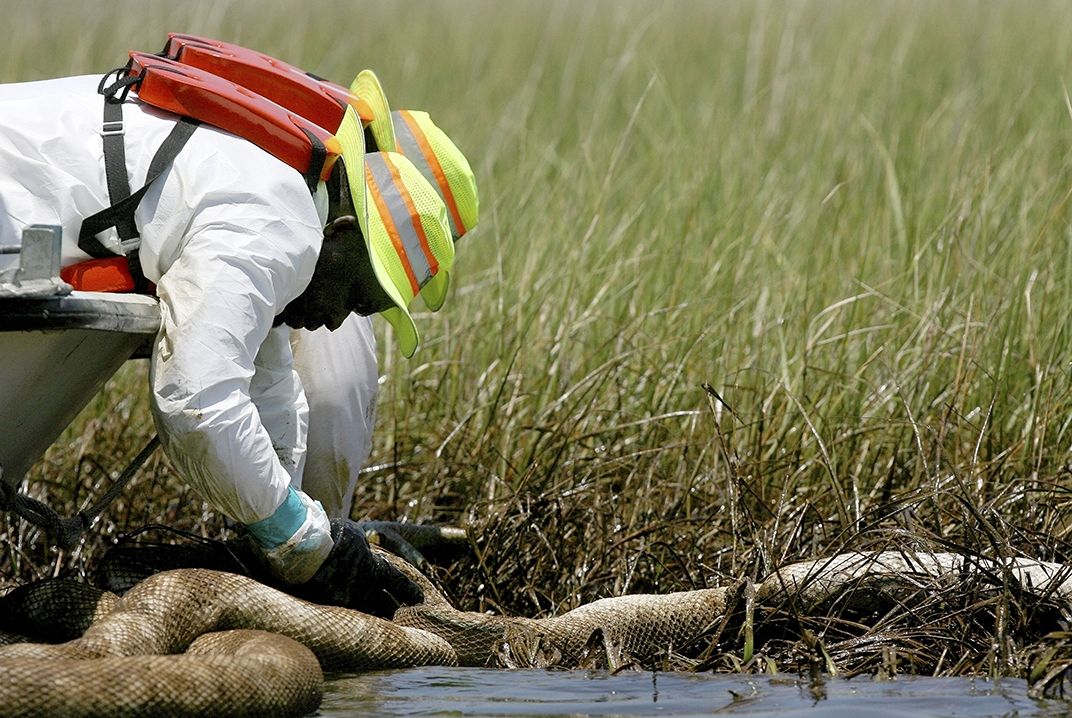
#3: All oil is poison.
No person in her right mind would eat a spoonful of crude oil, or eat a fish that was obviously contaminated. Oil in large amounts is not safe to ingest, inhale, or even handle. But when the body breaks it down to its small parts—the individual molecules and compounds that compose oil— there is much less risk to people or animals.
The portion of oil that poses the greatest risk to animals, including humans are the ringed molecules—the PAHs—because they can damage DNA. A newly developing organism with damaged DNA will often die, while DNA damage in older organisms can cause cancer. In particular, it’s the moderate-sized molecules that are considered the most harmful, like two-ringed naphthalenes (which are also found in mothballs) and three-ringed phenanthrenes (used to make dyes and plastics), because they can both damage DNA and dissolve in water, which gives them a route into an organism’s tissues and cells. These are broken down into smaller, harmless molecules through bacterial decomposition over time and some are readily lost to evaporation.
Luckily, the oil from the Deepwater Horizon spill happened to be a light crude oil, rather than the heavier crude oil released during the Exxon Valdez incident. As such it mainly contained small and moderately-sized molecules—the ones that can dissolve in water and be degraded.
"While some compounds evaporated at the surface, we think that most of them dissolved in the water column at 1,100-meter depth and dispersed in the deep water," said Overton. There they would be broken down by oil-eating bacteria already present in the environment.
All of which is to say—yes, oil can be dangerous and it's best to prevent large amounts from entering the environment. But not all of it is poison, and the oil that spilled in the Gulf was less toxic than many forms of crude oil.
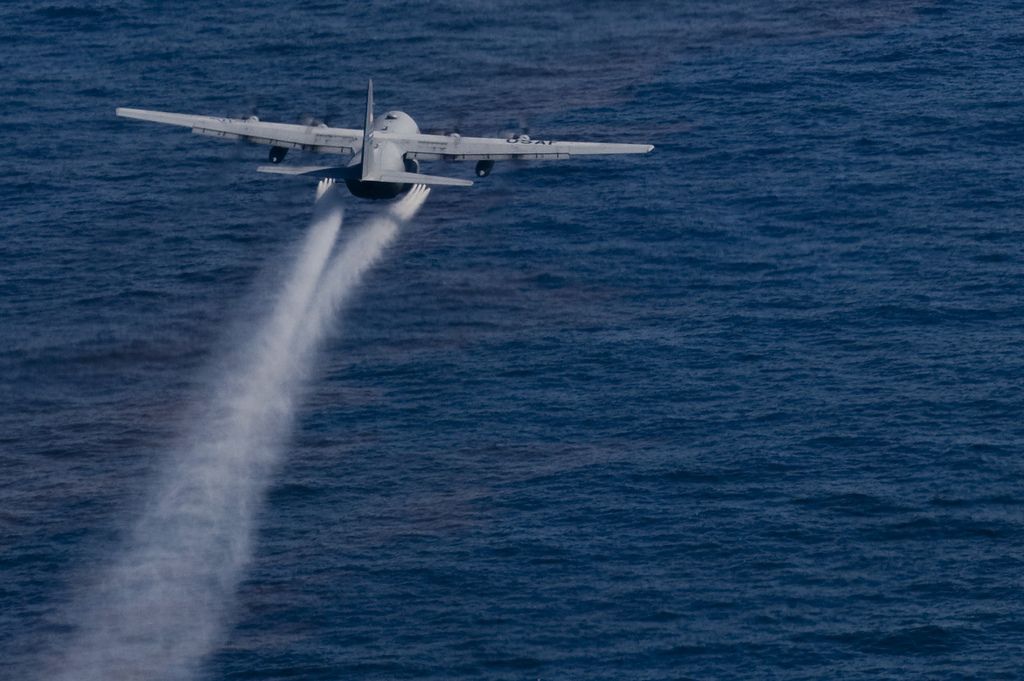
#4: The mixture of oil and dispersant is more toxic than either one alone.
During the spill, BP and various federal agencies applied 1.84 million gallons of dispersants to help break up the spill. Dispersants are similar to strong dishwashing soap and help to break oil down into smaller particles. The jury is still out on whether dispersants make oil more toxic.
You can imagine that it would take a long time for bacteria to degrade a massive oil slick if it had to start at the outside and work its way in. Broken up into small particles, bacteria can access the oil molecules more easily and have more time to degrade them before they wash ashore and get stuck in marshes.
While theoretically that sounds like a good idea, the decision to use dispersants was widely criticized. Part of this was very legitimate criticism and concern: While dispersants aren't known to hurt people in small doses (and all but one of the ingredients that make up the dispersants used in the Gulf are licensed by the FDA for use in food), we don't know much about how their presence in the environment affects wildlife, especially in such large amounts. The general feeling was: "do we need to dump more chemicals into the Gulf on top of all this oil?"
So when a paper came out claiming that the combination of dispersant and oil was three to 52 times more toxic than either one alone, observers of the spill were ready and waiting. Primed to expect the worst, fears were confirmed: we have made an already-toxic spill even more toxic.
But that sweeping statement obscures the real interaction between oil and dispersants. Dispersants don't change any inherent properties of oil molecules to make them more toxic; what they do is make the toxic PAHs more available to animals in the water column.
Fish and other large animals aren't going to intentionally eat globs of oil floating on the surface of the water. But animals have a harder time recognizing and avoiding smaller particles or ones dissolved in water, so they are more likely to be harmed by the dispersant-oil combination. Similarly, breaking the oil up into smaller particles and droplets makes them available to larval organisms and other small animals.
In exchange for making the toxic parts of oil more available to wildlife, those same parts were also available to bacteria. It was definitely a gamble; one couldn't be sure that the oil-eating bacteria would be as effective as they were. "Dispersants are a bad option to have to use, but it's a worse option to not use them," said Overton.
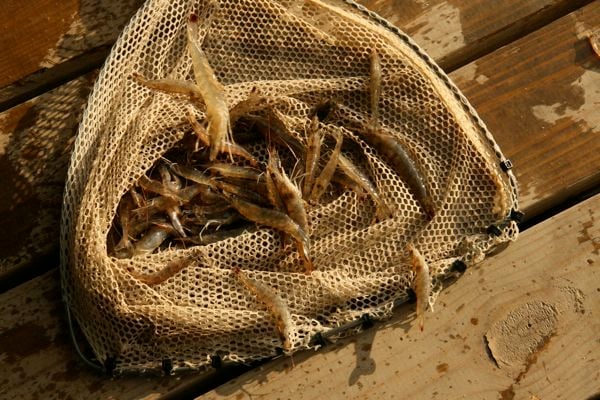
#5: The oil is mutating fish, destroying their populations, and putting our country's seafood at risk.
In the years following the spill, there were reports of misshapen or mutated fish. Eyeless shrimp. Tiny, clawless crabs. Fish covered in black lesions. Fish filled with a "black substance."
And often these observations led to widespread statements about the health of the country's seafood supply. One widely-read article in Al Jazeera read: "Given that the Gulf of Mexico provides more than 40 per cent of all the seafood caught in the continental US, this phenomenon does not bode well for the region, or the country."
It's crucial to remember that hurt to the Gulf fisheries will not threaten the country's seafood supply. While the Gulf is an important and significant source of certain types of seafood—70 percent of U.S. oysters, 69 percent of U.S. shrimp—it only supplied 18 percent of all U.S. seafood the year before the spill.
There weren't very good records kept of the mutations, but even if all of those reported were true, it's not as big a concern as you might think. Sure, they are ugly and scary. But the mutations and deformities that would hurt the Gulf fisheries most would happen to young fish—and would kill them before fishermen could catch and report them.
How do these deformities happen? It comes back to PAHs again. If PAHs cause DNA damage to an adult fish, it can cause cancer. DNA damage to a young fish can cause developmental problems that kill it, or it could survive with deformities. The more important question, and one that’s still poorly understood, is whether DNA damage will be passed on to future generations. That depends on whether a fish’s eggs or sperm were damaged, changes which could be passed on to offspring.
The lesions are scary because sometimes they look like black, oily open sores. But they aren't caused by direct contact with oil. "They develop because the fish is under a lot of stress—whether it’s from toxins in the water, not having enough food, or not being able to move out of the area," said Deb Murie, a fisheries ecologist at the University of Florida in Gainesville and lead investigator with GoMRI. "It's just like us: when we get stressed out it really impacts our immune systems.”
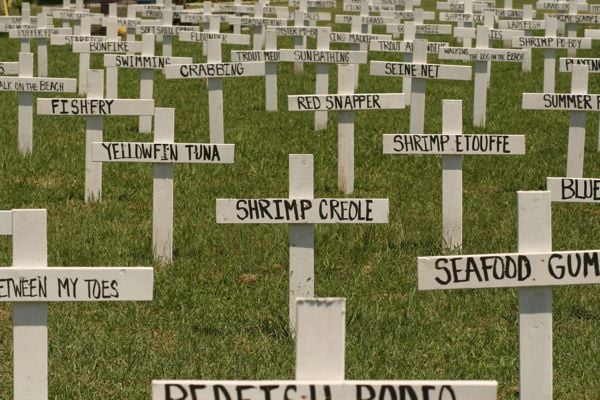
#6: If fisheries were going to crash, we would have seen it by now.
We still don’t know the long-term effects of the spill on fish populations. But we do know that the immediate danger to fisheries is damage to larvae that kills them before they grow up.
Without an oil spill, most larvae—around 99 percent— end up dying before they grow up. Larvae that aren't in good condition, like those damaged by oil, are weeded out of the population quickly by predators. This is why fish lay so many millions of eggs; only a few will survive.
If oil damaged fish larvae, those would be weeded out with the other 99 percent of larvae that do not grow to adulthood and things will be fine, right? That is a possibility, depending on how much larvae of a given species interacted with oil.
But "relatively small changes in mortality rates in early life stages can have big ramifications," said Frank Hernandez, who studies early life stages in fisheries oceanography at the University of Southern Mississippi in Ocean Springs and is a lead investigator with GoMRI. "Let’s say that for that one percent that survive, the food they need isn’t there for them, or they have some reduced heart capacity or some other critical body function. That’s not an effect you’re going to see right off the bat—not until they finally mature and enter the fishery.”
So when do they mature? Amberjack, for example, are caught at ages three or four, as are flatfish; any effects to fisheries due to the spill four years ago would be revealed in the coming season. Some fish species, like menhaden, are caught at younger ages, so we would have seen a fishery crash already. Meanwhile, others, like bluefin tuna, get caught at older ages so it will take more time.
"We’re just starting to get to the time period where we’ll be able to say something about it," Murie said. "In the next 3-5 years, I think we’ll feel a lot better if we see no effect.”
Many of the effects will also depend on when the fish released their eggs during the oil spill and where. Fish species, like red snapper, that spawn throughout the summer and throughout the Gulf will probably be fine, since there was a wide window of time and space for some eggs to be in unaffected water. But species like the bluefin tuna, whose spawning range and timing coincided with the spill, could potentially be in more trouble, as studies have found that tuna embryos develop heart problems when exposed to oil.
Another crucial confounding factor is that, shortly after the spill began, Gulf fisheries in the area were closed. There was essentially a whole season where fish were allowed to grow and reproduce without human interference by harvest. The adult females that produce the most eggs were able to spawn for an extra year before being caught, which means there was more larvae around to start with. This might mask some of the harm caused by the oil itself.
Without good data, researchers are hesitant to speculate on exactly how the spill affected fisheries. “It's inconceivable to me that there was no damage to fish populations from that much oil," said Overton. But whether that damage will change adult populations is not yet known, he added.
Hernandez noted that people always want to compare the Gulf spill with the Exxon-Valdez oil spill in Alaska’s Prince William Sound, where the herring fishery crashed four years later. "There's a cautionary tale there so we’re on guard. But this is a very different system,” he said.
The Gulf of Mexico is very large and open, giving mobile organisms plenty of space free from oil. The spill occurred 50 miles offshore, limiting the amount of oil that reached the estuaries and marshes that so many fish species rely upon. The frequency of natural oil seeps ensured that plenty of oil-degrading bacteria were around and ready to clean up. And the Gulf’s waters are much warmer than those of Alaska, especially during the summer, speeding up oil breakdown by bacteria.
“I’m optimistic,” Hernandez said. “I think the nature of the Gulf is going to be somewhat resilient.”
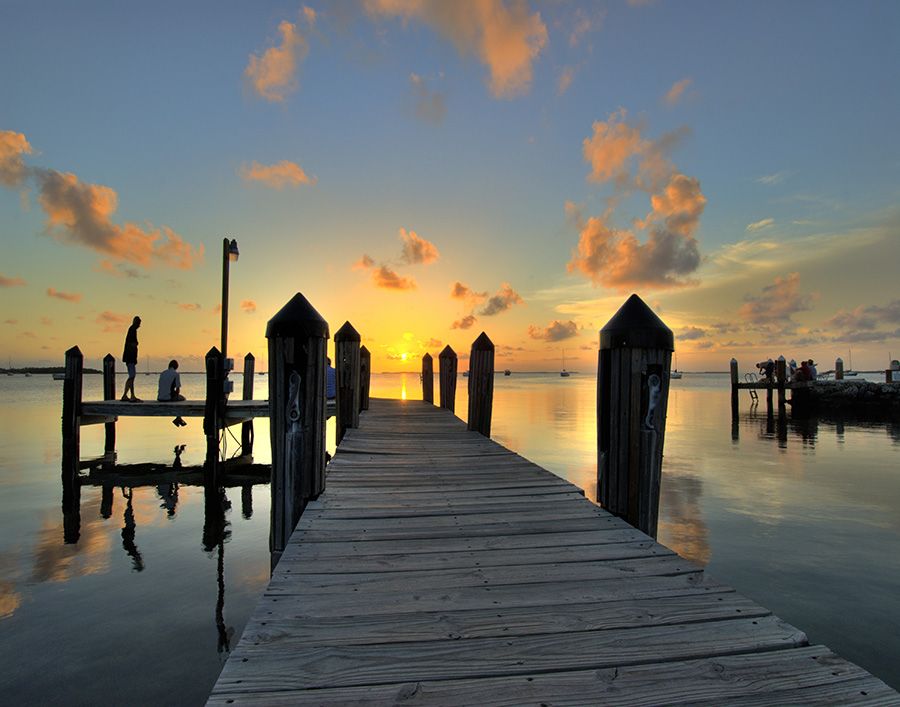
#7: Anything bad that happens in the Gulf can be attributed to the spill.
Since the spill, whenever anything "bad" happens in the Gulf, people automatically connect it to the spill. This isn't a bad impulse; the spill potentially did a lot of damage and left a huge emotional impact on the country.
But the Gulf as an ecosystem was far from pristine before the spill. Some 41 percent of the continental U.S.— mainly fertilized farmland—drains down the Mississippi River into the Gulf of Mexico. This carries 1.7 million tons of nutrients (pdf) into the Gulf each year, causing massive growth of phytoplankton and plankton that consume all the oxygen out of the water. The massive growth forms a "dead zone" of low-oxygen water with little life near the bottom, averaging around 6,000 square miles in the Gulf. In the waters above the bottom, dead zones can cause reproductive problems in fish or, more frequently, just kill larvae and eggs outright. There are also other sources of pollution, such as oil leaks from vessels and toxins in runoff from land.
In addition to all these human influences, the Gulf has a lot of natural variability. Saltiness and temperature change through the year and big storms or hurricanes can shift coastlines and damage infrastructure. These all will affect the survival and health of animals, making it hard to separate man-made from natural influences.
This doesn't mean the spill did no harm, or that we should stop looking for effects of the spill because it would just be too difficult to identify direct causes. However, we need to be careful about where we lay our blame. We shouldn’t assume that all negative events in the Gulf since April 2010 were the fault of the spill. This not only obscures other potential problems, but also keeps us from fully understanding the impacts of oil spills. Without this understanding, we’ll be ill prepared for the next big spill.